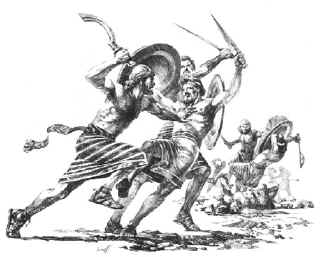
The book of Judges describes the period when the Israelites were
settling into the Promised Land following the Exodus from Egypt. Because
the conquest was not complete, warfare was frequent, and resulted in
the hero stories preserved in Judges. These heroes were known as
"judges", meaning, not people who decided court cases, but military
leaders who delivered Israel from her enemies. What weapons did these
heroes use, and what was their strategy in defeating their enemies?
The Bible does not usually give a detailed description of weapons or
of military strategy. Yet we have a good knowledge of weapons from
archaeological discoveries and drawings, paintings and reliefs.
Offensive weapons
Offensive weapons in use at this time can be divided into three
categories according to their range. Short-range weapons were used in
hand-to-hand combat and included the sword or dagger and the spear.
Medium-range weapons were designed to be thrown at enemies a short
distance away. Occasionally spears were light enough to be thrown, but
the shorter and lighter javelin was better suited for throwing.
Long-range weapons could be thrown or fired at an enemy further away.
Examples of long-range weapons include the sling, used to hurl stones,
and the bow, for propelling arrows.
Armour was used to protect the foot soldier’s body as far as
possible. Armour included the helmet for the head, scale armour, coats
of mail, the breastplate for the body and greaves to cover the shins.
The foot soldier also carried a shield to cover any unprotected parts of
his body. An armour-bearer or shield-bearer could also be employed to
carry the soldier’s weapons and his shield.
With this information, we can discuss the weapons and warfare
described in the book of Judges, where we read "...not a shield or spear
was seen among forty thousand in Israel" (Judges 5:8).
Clearly weapons were in short supply, at least for the Israelites, an
interpretation which is supported by the [above] lists of weapons
mentioned in Judges.
These two lists of weapons reveal a striking contrast between Israel
and her enemies. The Israelites used mostly "primitive" weapons, such as
farm implements and household articles, and had few metal weapons. By
contrast, their enemies possessed metal weapons, particularly iron
weapons. Iron was much harder and more durable than bronze or copper,
and its manufacture took greater technological skill than the Israelites
possessed. The Iron Age commenced in Israel during the days of the
judges...the Philistines already had something of a monopoly of iron
metallurgy.... As long as the Philistines maintained this monopoly,
Israel could not hope to dislodge them from the plain (Judges 1:19).
On those occasions when the Israelites did prevail against their
enemies, it was credited to divine help; some of their success must also
have been the result of better strategy or tactics.
Iron chariots
Let us look first at the weapons of Israel’s enemies. We learn that
the men of the tribe of Judah could not drive out the inhabitants of the
plain because they had iron chariots (Judges 1:19).
Pulled by two horses, the chariot was in effect a moving platform for
two or three soldiers. It was most valuable in making rapid flanking
movements where the land was fairly flat and open. The coastal area was
relatively level, while the hill-country inland featured steep slopes
and deep valleys. In ancient times the hills were heavily forested and
Israelite guerilla tactics proved successful in this territory. However,
in the coastal plain the Canaanite and Philistine iron chariots proved
to be the tanks of their period, racing across the flat country. But
chariots were ineffective on wooded hills.
Since the Iron Age had just begun in Canaan, iron chariots would have
been the latest and best military weapon. Some scholars believe the
iron would have been used to make part of the wheels and fittings of the
chariot, while others think there was an iron plate to reinforce the
wooden body of the chariot. In either case, the iron would have been
superior to bronze, and would have made the chariot more durable.
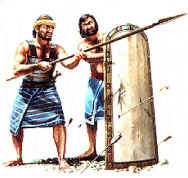
Since
Israel did not obtain chariots until the time of the monarchy, they
simply could not dislodge the people of the coastal plain. But in one
instance there was a strikingly different result. Jabin and Sisera, from
the stronghold of Hazor, had a massive force of 900 iron chariots
(Judges 4, 5). But Deborah and Barak, the Israelite leaders, were
successful against this superior force because God routed the enemy.
There is also the implication that there was a late spring storm which
turned the river Kishon into a raging torrent and rendered the iron
chariots useless in the battle.
Apart from the chariots, the only other enemy weapon mentioned in Judges is the sword. The Midianites possessed them (Judges 7:22), but in their panic to flee from Gideon, killed one another....
The assassination of Eglon
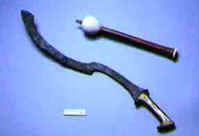 |
| Weapons from ancient Egypt. Photo courtesy of Dallas Brown, Southern Illinois University at Edwardsville |
The Israelites also used some traditional weapons. The story of Ehud,
who plotted a daring one-man assassination attack on King Eglon of
Moab, is told in Judges 3:12-30.
The standard sword of this period was curved, with one sharp edge used
for slicing and slashing. It is sometimes called a sickle sword, and is
the basis of the expression "smite the enemy with the edge of the sword"
[see, for example, Judges 1:8, 25; 4:15; 18:27,
KJV]. This type of weapon would not have served Ehud’s need, since it
could not easily have been concealed from the palace guards, nor could
it be used to thrust or stab to death. So the text explains: "Ehud had
made a double-edged sword about a foot and a half long, which he
strapped to his right thigh under his clothing" [Judges 3:16]. Such metal weapons were still very rare in Israel.
Because Ehud was left-handed, he hid his sword on the right side;
right-handed soldiers would wear their swords on their left side. This
reversal may explain Ehud’s success in getting past the king’s guards.
By implying that he was the bearer of a confidential message, Ehud got
rid of all of Eglon’s attendants. When Ehud told the king that his
message was from God, Eglon stood up and put himself in an ideal
position for Ehud to stab him with the concealed sword. As the sword had
been designed for stabbing, it probably had a relatively short hilt,
which would have penetrated Eglon’s fat body. Having accomplished his
piece of treachery, Ehud fled, calling his waiting men into battle. With
their king dead, the Moabites would have retreated hastily across the
river Jordan to their homeland, or sought for reinforcements from
Moabite territory. By taking control of the fords across the river,
Ehud’s men were able to win the ensuing battle decisively.
In another incident the judge Gideon told his son, Jether, to kill Zebah and Zalmunna with a sword (Judges 8:20).
However, Jether was afraid because of his youth, and Gideon did it
himself. This is one of the rare instances recorded in the book of
Judges of an Israelite using a sword.
After Gideon’s son Abimelech had been severely wounded, he asked his armour-bearer to kill him (Judges 9:54).
The armour-bearer took the sword and killed Abimelech, as commanded.
This was apparently one of the accepted functions of the armour-bearer
in these times; later King Saul made a similar request of his own
armour-bearer (1 Samuel 31:4).
There is no record in Judges of other individual Israelites using the
sword, and the only other conventional weapon mentioned is the sling.
We are told that 700 left-handed slingers from the tribe of Benjamin
could sling a stone at a hair and not miss (Judges 20:16).
Alternative weapons
On the other hand, many other objects served as weapons when nothing
better was available. We are told that Shamgar struck down 600
Philistines with an ox goad, in a tantalizingly brief reference (Judges 3:31).
Perhaps he was ploughing with his oxen when the Philistines appeared
over the hill. The ox goad was a farm implement, about two or three
metres (eight or ten feet) in length, with one end pointed, and
sometimes metal-tipped, to prod the ox to plough. The other end was
fashioned with a scraper to dislodge the clods that became entangled in
the plough. Shamgar’s heroic feat fits the pattern in the book of Judges
of gaining victory with inferior weapons.
In Judges 4 and 5 we learn how Sisera fled the battlefield to avoid
being killed or captured. He came to the tent of Jael, who seemed to
offer him safety. However, while he was sleeping off his fatigue, she
took a hammer and tent-peg and pounded the peg through his temple (Judges 4:21, 5:26). The hammer she used was probably made of stone, and the tent-peg a wooden object.
Gideon’s surprise attack
Gideon was faced with the task of fighting the Midianites (Judges 7).
They had large encampments, with women, children, cattle, camels and
tents, which meant their greatest weakness was that they could easily be
panicked by a surprise attack. This was exactly the strategy that
Gideon chose to employ, which explains why he used such a small force of
only 300 men. The smaller the force, the less chance there was of
detection in a surprise attack. Gideon divided his troops into three
companies and positioned one company on each of three sides of the
Midianite camp. He probably left open the east side, where the terrain
was most problematic, so that any survivors would have had a difficult
time if they fled.
Gideon waited until the Midianites were all sleeping soundly, and
until the new sentries, unaccustomed to the darkness and to night
conditions, came on duty. Since co-ordination is absolutely essential in
a surprise attack, he himself was to signal the attack, to ensure that
nobody made a false start. At his signal, everyone smashed his jar, blew
his trumpet and shouted. The noise panicked the Midianites; when they
looked out of their tents they saw the flickering torches, which could
easily have been used to set the tents alight, and so increase the
panic. Fearing that they were surrounded by a huge enemy force, the
Midianites rushed to escape, falling on each other with their swords in
the confusion. The surprise attack had succeeded to perfection, and
Gideon won the battle with ease.
Another unusual weapon was used by a woman against Abimelech (Judges 9:50-54).
When he attacked Thebez, all the people fled to the city’s tower. Safe
in the tower, the woman waited till Abimelech was close to the entrance,
then dropped a millstone on his head, mortally wounding him. A
millstone was normally about five to eight centimetres (two or three
inches) thick and 50 centimetres (eighteen inches) in diameter.
Samson’s weapons
Samson did not use orthodox weapons either. When he was met by a
roaring lion, he had no weapons at all; using his bare hands and brute
strength, he tore the lion apart as if it had been a tender young goat (Judges 14:6).
On another occasion, he was weaponless because he had just been handed
over to the Philistines. He picked up the fresh jawbone of a donkey
(this must have been heavier and moister than an old, dried-out jawbone)
and killed 1000 Philistines with it, wielding it like a club (Judges 15:15).

On
another occasion, Samson went to Gaza, in Philistine territory, to
visit a prostitute. Since it was night, the Philistines closed the city
gate on him. (The city would have had a thick wall surrounding it, and
only one exit.) When the hero went to leave, he found the gate barred
shut. Undeterred, he pulled up the gate-posts and the gate itself, and
walked free from the city (Judges 16:1-3).
Since a city would have taken great pride in its fortifications, his
action would have been a great humiliation to the citizens, and left the
place temporarily defenceless. Finally, at the end of his life, Samson
used his hands and arms to topple the columns of the Philistine temple
and thus kill himself and 3000 Philistines with him.
Final battle
The last battle recorded in the book of Judges, the attack on Gibeah, gives an interesting account of battle tactics (Judges 20:18-48).
As the defenders, the people of Gibeah and the Benjaminites had an
advantage since they were fighting to defend their home territory.
Israel’s two head-on assaults were successfully repulsed, as the town of
Gibeah was well fortified and encircled by a thick, high wall.
On their third attempt, the Israelites set up an ambush out of sight
of the city, and then pulled back their assault force as if in flight.
The unsuspecting Benjaminites sallied out from the safety of the city to
pursue the "fleeing" army, leaving Gibeah defenceless. At this point
the ambush party attacked the city, and set it on fire. The clouds of
smoke from the burning city acted as a signal to the assault force to
turn and counter-attack the Benjaminites, now trapped between the
Israelites and their burning city. The clouds of smoke from the
destroyed city further demoralized them.
This civil war disaster and its aftermath led the writer of Judges to
conclude the book with a strong plea for kingship: "In those days
Israel had no king; everyone did as he saw fit" (Judges 21:25).
THANKS FOR READING BUT NOTE THAT THIS ARTCILE WAS POSTED BY AFOLABI MICHEAL FROM-James Moyer,
Discovering the Bible: Archaeologists Look at Scripture, ed. Tim Dowley, Marshall Morgan & Scott Publications Ltd., Basingstoke, England, 1986, pp. 42-50.
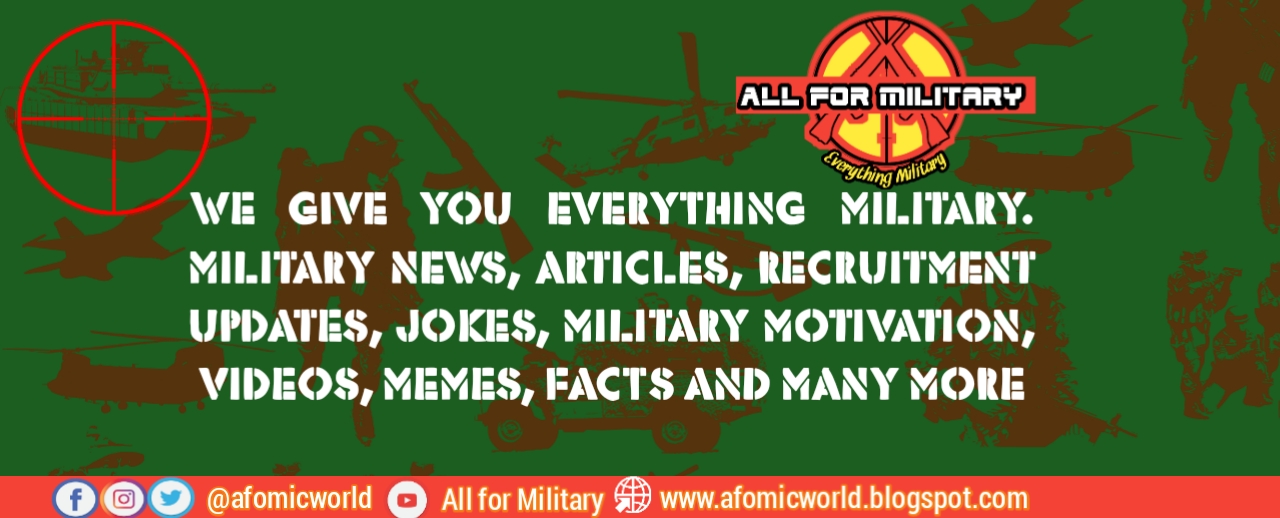

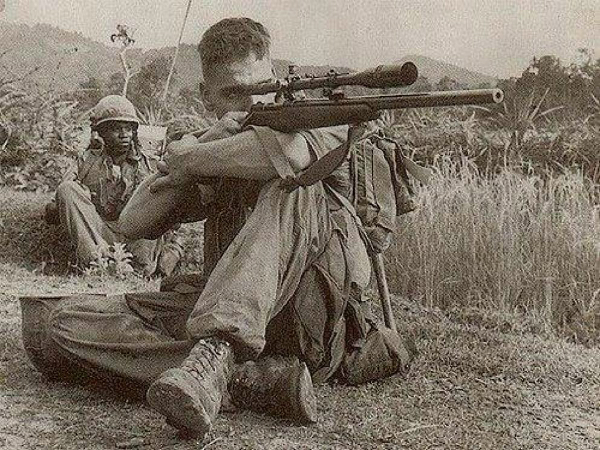
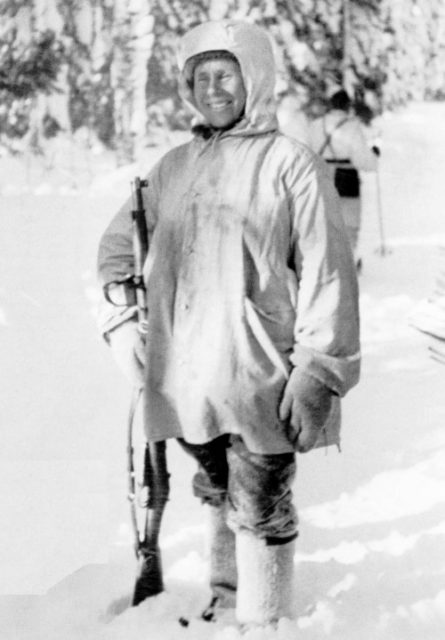
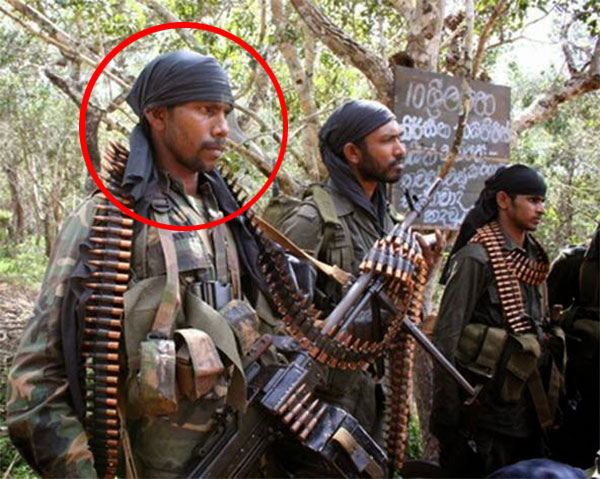
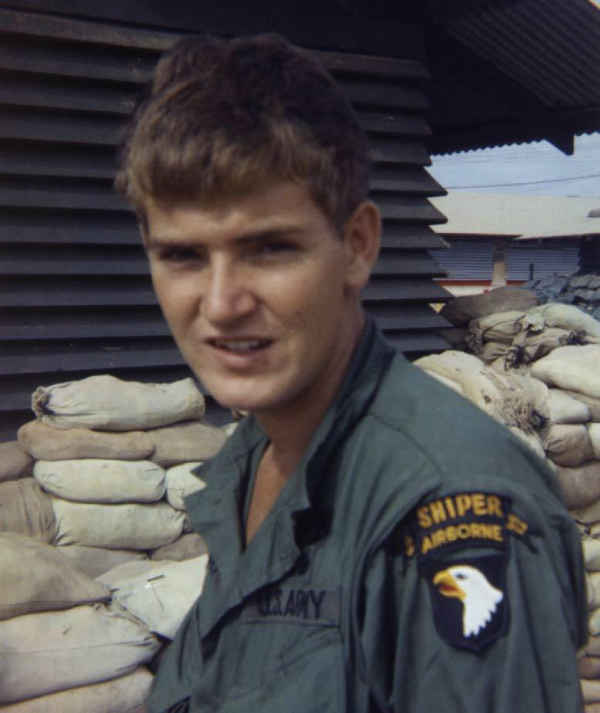
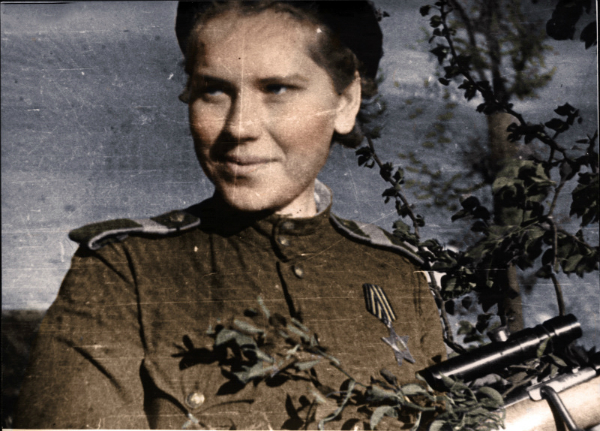

 Since
Israel did not obtain chariots until the time of the monarchy, they
simply could not dislodge the people of the coastal plain. But in one
instance there was a strikingly different result. Jabin and Sisera, from
the stronghold of Hazor, had a massive force of 900 iron chariots
(Judges 4, 5). But Deborah and Barak, the Israelite leaders, were
successful against this superior force because God routed the enemy.
There is also the implication that there was a late spring storm which
turned the river Kishon into a raging torrent and rendered the iron
chariots useless in the battle.
Since
Israel did not obtain chariots until the time of the monarchy, they
simply could not dislodge the people of the coastal plain. But in one
instance there was a strikingly different result. Jabin and Sisera, from
the stronghold of Hazor, had a massive force of 900 iron chariots
(Judges 4, 5). But Deborah and Barak, the Israelite leaders, were
successful against this superior force because God routed the enemy.
There is also the implication that there was a late spring storm which
turned the river Kishon into a raging torrent and rendered the iron
chariots useless in the battle.
 On
another occasion, Samson went to Gaza, in Philistine territory, to
visit a prostitute. Since it was night, the Philistines closed the city
gate on him. (The city would have had a thick wall surrounding it, and
only one exit.) When the hero went to leave, he found the gate barred
shut. Undeterred, he pulled up the gate-posts and the gate itself, and
walked free from the city (Judges 16:1-3).
Since a city would have taken great pride in its fortifications, his
action would have been a great humiliation to the citizens, and left the
place temporarily defenceless. Finally, at the end of his life, Samson
used his hands and arms to topple the columns of the Philistine temple
and thus kill himself and 3000 Philistines with him.
On
another occasion, Samson went to Gaza, in Philistine territory, to
visit a prostitute. Since it was night, the Philistines closed the city
gate on him. (The city would have had a thick wall surrounding it, and
only one exit.) When the hero went to leave, he found the gate barred
shut. Undeterred, he pulled up the gate-posts and the gate itself, and
walked free from the city (Judges 16:1-3).
Since a city would have taken great pride in its fortifications, his
action would have been a great humiliation to the citizens, and left the
place temporarily defenceless. Finally, at the end of his life, Samson
used his hands and arms to topple the columns of the Philistine temple
and thus kill himself and 3000 Philistines with him.








